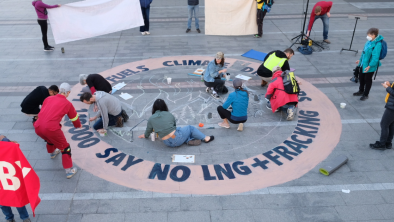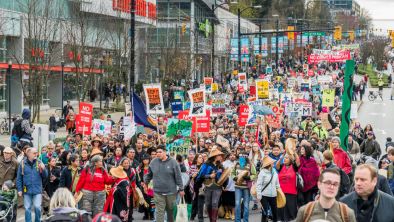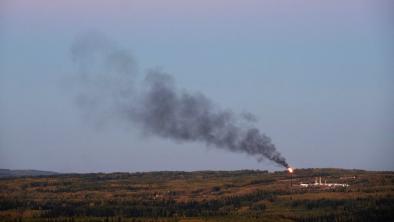B.C. approves $8.8-billion Site C hydroelectric dam
Tuesday, December 16, 2014
The Globe and Mail
The B.C. government has approved the construction of the Site C dam on the Peace River at an estimated cost of almost $8.8-billion, making it the largest public infrastructure project in the province’s history.
But the government will delay the project until next summer and has adjusted the price to be $900-million higher than what BC Hydro had proposed. The project faces a series of lawsuits, and on Tuesday, environmentalists, First Nations and the NDP renewed their opposition to the dam.
Premier Christy Clark, at a news conference in Victoria, said the revised budget reflects “the true cost” of building the dam, but she believes it remains the cheapest option to meet British Columbia’s growing demand for electricity in the future.
“I believe the people of our province will continue to prosper,” she said. “We need to ensure there is power – clean, reliable, sustainable power.”
Site C will be built downstream of the W.A.C. Bennett and Peace Canyon dams in northeastern B.C., and will be the first major hydroelectric dam to be built in the province since completion of the Revelstoke dam in 1984.
“It is big, it is expensive, but it will meet 8 per cent of the total energy needs of the province,” B.C. Energy Minister Bill Bennett said. “It is next to impossible for any other option to compete with it.”
He said the cost has climbed from BC Hydro’s $7.9-billion budget because the cabinet wanted a larger contingency fund, and costly construction delays will push the in-service date into 2025.
With 1,100 megawatts of capacity, the Site C dam would provide enough energy to power the equivalent of about 450,000 homes a year. But it will flood 55 square kilometres of river valley and will have negative impacts on wildlife and First Nations’ communities.
The Crown-owned utility BC Hydro had hoped to begin preliminary construction in January, but that will be delayed now until the summer, in part because the project already faces half a dozen legal challenges from local landowners and First Nations from B.C. and Alberta. The delay will allow more time for negotiations.
Roland Willson, chief of the West Moberly First Nations, said he was “highly disappointed” by the government’s decision to advance with Site C. Flooding linked to the project would affect fishing, hunting, trapping and sacred native sites that are thousands of years old.
“It’s a nightmare for us, and in the long term, it’s going to be a nightmare for British Columbia,” he said in an interview. His community is part of the Treaty 8 Tribal Association’s legal challenge to Site C. He said the cumulative effect of the earlier dams, along with expanded natural gas extraction and other resource development, is too much for aboriginal communities in the north. “There’s no yellow light up here. It’s always a green light.”
He said his band’s lawyers will seek injunctions to block construction until their legal appeals are heard.
Environmental groups denounced the project Tuesday. “The Site C dam project is so damaging to the environment and wasteful of taxpayers’ funds that it’s beyond me how any government could come out in favour of building it,” Joe Foy, the Wilderness Committee’s national campaign director, said in a statement.
Both the federal and provincial governments have already granted environmental certificates, arguing that the downsides are justified because Site C would generate clean, renewable energy for the next 100 years.
Independent power producers have argued they can provide B.C.’s growing need for electricity at a competitive cost, but the province tilted the playing field last fall when it changed the way it collects dividends from BC Hydro. As a result of those accounting changes, the cost per megawatt hour of Site C electricity decreased by one third.
Paul Kariya, executive director of Clean Energy BC, kept any frustration in check on Tuesday, saluting the government for a “courageous” decision. However he added that if court actions against Site C delay the project, members of his industry association of power producers in wind, small hydro, biomass and geothermal energy would be ready to help fill the gap.
B.C. NDP Leader John Horgan said the Premier is taking a huge risk with public money to meet her goals of job creation. “It’s Site C or nothing. I think there are more choices than that in the world.”
Photo: The area of the Peace River where the proposed Site C hydroeletric dam would be built near Fort St. John, B.C.


